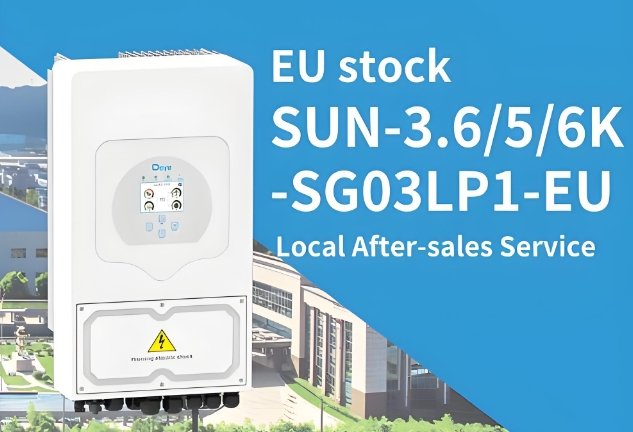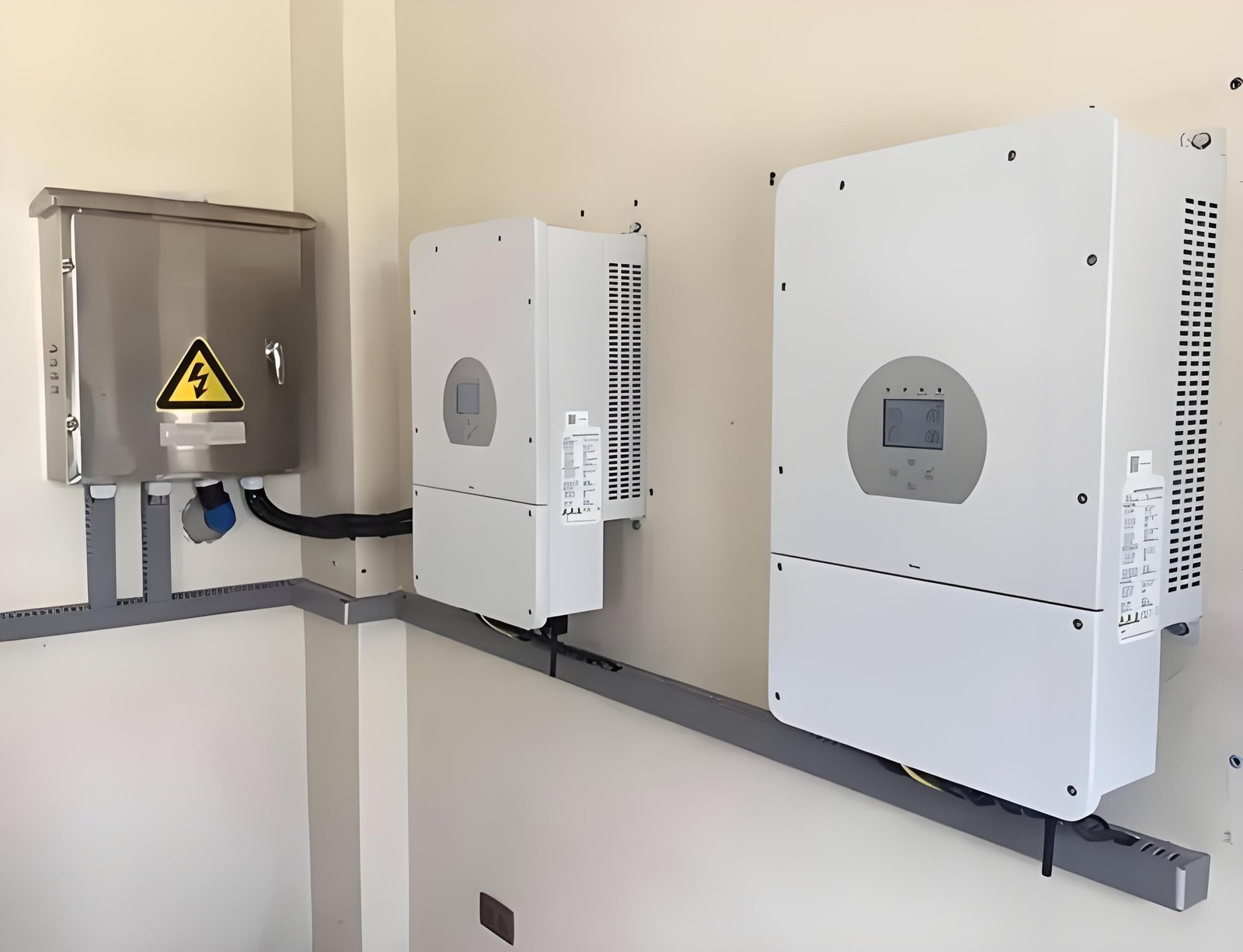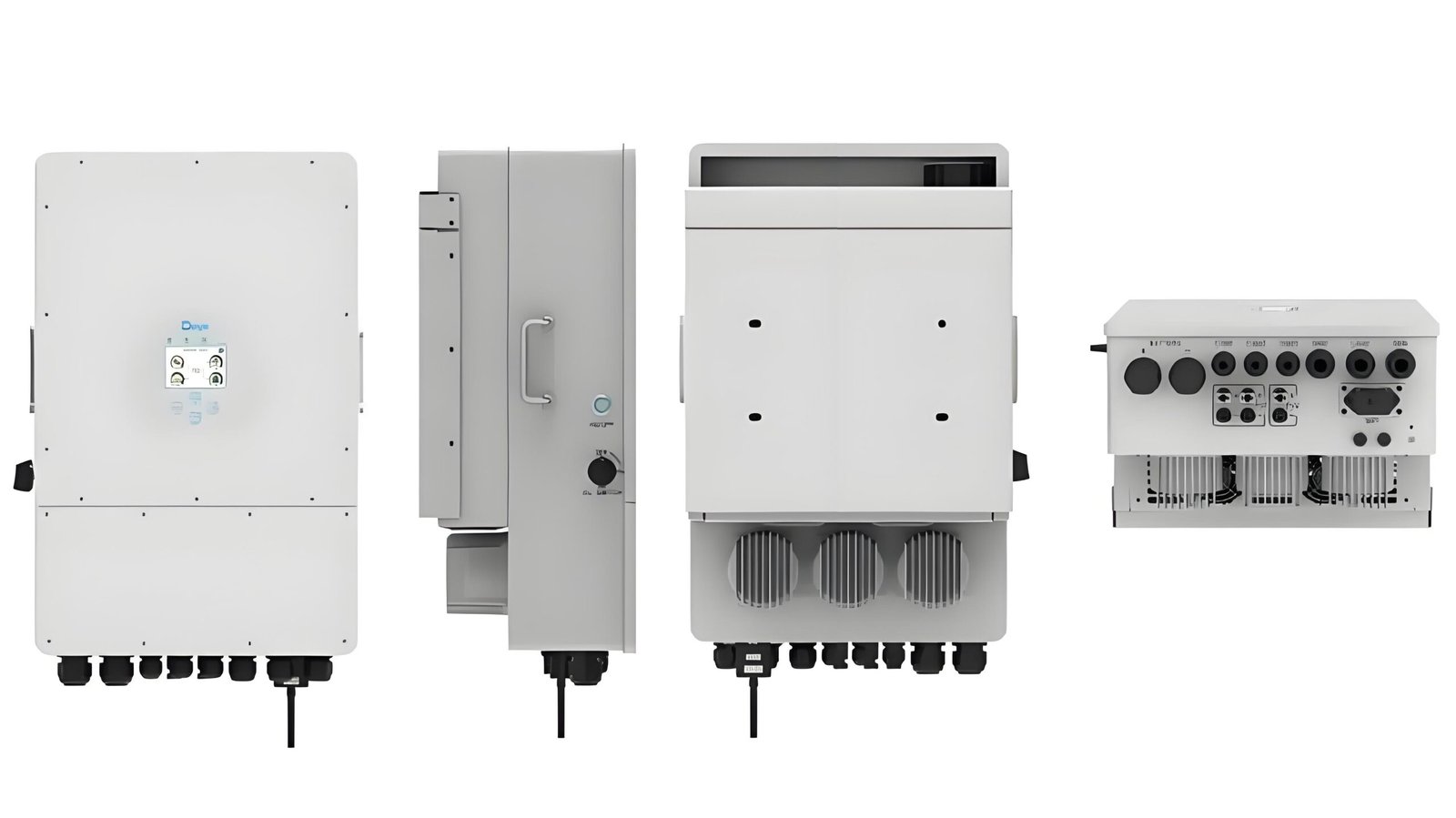
SUN-3.6 5 6K-SG03LP1-EU
Efficient, reliable, and feature-packed, the Deye Hybrid Inverter SUN-3.6/5/6K-SG03LP1-EU is designed to optimize solar energy usage for residential and commercial applications. This guide provides insights into its key features, installation requirements, and operating modes to help you get the most out of your investment.
Comprehensive Product Overview
This hybrid inverter1 combines the functions of an inverter, solar charger, and battery charger into a compact, high-performing unit. It ensures uninterrupted power supply and efficient energy management, making it ideal for modern solar systems.

Key Features:
- Self-consumption and grid feed-in support: Allows energy optimization by prioritizing solar or battery usage.
- Multiple operation modes: Supports on-grid, off-grid, and UPS functionality.
- Programmable settings: Configure battery charging voltage/current and operation priorities via an LCD panel.
- Overload protection: Safeguards against temperature surges and short circuits.
- Dual MPPT trackers2: Maximizes solar energy harvest under varying sunlight conditions.
- WiFi monitoring: Enables remote energy monitoring and management.
- Battery compatibility: Supports advanced lithium battery systems for enhanced performance.
Technical Specifications
| Model | SUN-3.6K-SG03LP1-EU | SUN-5K-SG03LP1-EU | SUN-6K-SG03LP1-EU |
|---|---|---|---|
| Rated Power Output | 3.6 kW | 5.0 kW | 6.0 kW |
| MPPT Voltage Range | 150V-425V | 150V-425V | 150V-425V |
| Efficiency | Up to 98% | Up to 98% | Up to 98% |
| Max. Input Voltage | 500V | 500V | 500V |
| Battery Voltage Range | 48V | 48V | 48V |
| Number of MPPTs | 2 | 2 | 2 |
| Max. AC Output Current | 16A | 22A | 27A |
Installation and Space Requirements
Pre-Installation Checklist
Before installing the inverter, ensure all necessary tools and parts are ready. Each package includes the following:
- Wall mounting bracket
- Stainless steel bolts and screws
- Magnetic rings for wiring
- Battery temperature sensor
- User manual
Installation Environment
To maximize performance and lifespan, consider the following:
- Placement: Install on a vertical, load-bearing wall away from direct sunlight and rain.
- Clearance: Maintain at least 50 cm clearance on all sides for proper heat dissipation.
- Temperature3: Operate within -40°C to 60°C for optimal efficiency.
Mounting Instructions
- Prepare the Wall: Drill four 62-70mm deep holes using the recommended drill head.
- Fix the Mounting Bracket: Secure the bracket with expansion bolts.
- Hang the Inverter: Align the inverter’s hooks with the bracket and fasten it securely.
Battery and Grid Connection Guidelines
Battery Connection
Proper battery connection is crucial for safe and efficient operation. Follow these steps:
- Use appropriately sized cables (refer to the table below).
- Ensure correct polarity: positive (+) to positive and negative (-) to negative.
- Fasten battery connectors4 using a torque wrench (5.2 Nm).
Recommended Cable Sizes:
| Model | Wire Size (AWG) | Cable (mm²) | Torque Value (Nm) |
|---|---|---|---|
| 3.6kW | 2 AWG | 25 mm² | 5.2 |
| 5.0kW | 1 AWG | 35 mm² | 5.2 |
| 6.0kW | 0 AWG | 50 mm² | 5.2 |
Grid and Backup Load Connection
- Install a 40A AC breaker5 between the inverter and grid/load.
- Use copper cables with proper insulation.
- Follow wiring polarity carefully to prevent short circuits.
Solar PV Integration and MPPT Optimization
The Deye Hybrid Inverter supports dual MPPT trackers to enhance energy harvest.
PV Module Selection
- Open Circuit Voltage (Voc) must not exceed 500V.
- Minimum MPPT voltage: 150V.
- Ensure modules are Class A certified IEC 617306.
Recommended PV Parameters:
| Parameter | Value | Notes |
|---|---|---|
| Maximum Voc | 500V | Must not exceed inverter limits |
| MPPT Voltage Range | 150V-425V | Optimal range for efficiency |
| Strings per MPPT | 2 | Supports 2 strings per MPPT |
| Max. Input Current per MPPT | 13A | Ensure modules match current limits |
PV Connection Steps
- Turn off the main grid supply and DC isolator.
- Connect PV modules to the inverter’s DC+ and DC- terminals.
- Secure connections with approved solar connectors to ensure waterproofing.
Operational Modes and Monitoring
Power Modes
The inverter supports flexible operational modes:
- On-Grid Mode: Prioritizes solar energy while feeding surplus to the grid.
- Off-Grid Mode: Supplies power independently from the grid using battery storage.
- UPS Mode: Provides uninterrupted power during outages.
LCD Display and WiFi Monitoring
- LCD Screen: Displays system status, battery health, and energy flow.
- WiFi Connectivity: Real-time monitoring via the Deye mobile app or cloud platform WiFi Monitoring7.
Maintenance and Troubleshooting
To ensure long-term performance, regular maintenance is essential. The inverter’s intelligent system alerts users to potential issues, making troubleshooting straightforward.
Maintenance Tips
- Visual Inspections: Check for loose connections, dirt, or damage monthly.
- Software Updates: Ensure the firmware is updated to the latest version.
- Cooling System: Keep air vents clean to prevent overheating Solar Inverter Maintenance8.
Common Troubleshooting Steps
| Issue | Possible Cause | Solution |
|---|---|---|
| Inverter Not Starting | Improper wiring or low battery | Verify wiring and charge battery |
| Low Output Efficiency | Dirty panels or incorrect settings | Clean panels and adjust settings |
| Error Code: E01 | Overload detected | Reduce load and restart inverter |
| Error Code: E02 | Overtemperature | Improve ventilation and restart |
| Error Code: E03 | Grid fault | Check grid voltage and frequency Troubleshooting Tips9 |
Conclusion
The Deye Hybrid Inverter SUN-3.6/5/6K-SG03LP1-EU is a versatile, efficient solution for residential and small commercial solar systems. With advanced features like dual MPPT trackers, battery compatibility, and remote monitoring, it ensures seamless energy management for diverse applications.
Footnote
-
This link explains what a hybrid inverter is, including its main functionalities and benefits in solar energy systems. ↩
-
This link explains the Maximum Power Point Tracking (MPPT) technology used in solar systems to maximize energy harvest from solar panels. ↩
-
This link will provide information on the optimal operating temperature for inverters to ensure maximum efficiency and longevity. ↩
-
Learn the proper procedure for connecting a battery to an inverter, including size, polarity, and torque specifications. ↩
-
This link explains the function of an AC breaker, especially in protecting against electrical faults in solar energy systems. ↩
-
This link provides information on IEC 61730, an international standard for the safety and quality of photovoltaic (PV) modules. ↩
-
Learn how WiFi-enabled solar monitoring allows real-time tracking of system performance, energy consumption, and battery health via mobile apps. ↩
-
This link provides maintenance guidelines for solar inverters, including how to handle firmware updates, inspections, and system checks for optimal performance. ↩
-
This link offers troubleshooting advice for common inverter problems, including error codes and potential solutions. ↩





